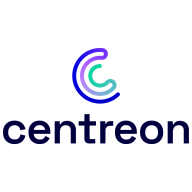

InfluxDB and Centreon operate in the realms of database management and network monitoring. InfluxDB seems to dominate in handling time-series data efficiently, while Centreon more effectively covers network monitoring requirements.
Features: InfluxDB offers a powerful time-series database with real-time queries and seamless scalability, allowing it to handle large volumes of time-stamped data efficiently. Centreon provides comprehensive network and system monitoring, robust alerting mechanisms, and detailed dashboards, making it suitable for broad monitoring needs.
Room for Improvement: InfluxDB struggles with a steep learning curve, limited support for non-time-series data, and a need for better integration capabilities. Centreon could enhance user interface customization, reduce resource consumption, and expand its support for cloud environments.
Ease of Deployment and Customer Service: InfluxDB offers a straightforward deployment process with solid documentation, although users report a need for technical expertise. Centreon is known for its user-friendly deployment and robust support structures, making it easier for initial setup.
Pricing and ROI: InfluxDB's competitive initial setup costs provide high ROI through efficient data handling over time. Centreon's higher upfront costs are offset by advanced features delivering significant long-term value through its comprehensive monitoring capabilities.


Centreon is an all-in-one IT monitoring solution that is a network, system, applicative supervision, and monitoring tool. It is free and open source, and one of the most flexible and powerful monitoring softwares on the market.
Centreon Features
Centreon has many valuable key features. Some of the most useful ones include:
Centreon Benefits
There are several benefits to implementing Centreon. Some of the biggest advantages the solution offers include:
Reviews from Real Users
Below are some reviews and helpful feedback written by Centreon users.
PeerSpot user Thor M., CEO at a tech services company, says, "The single-pane view provides us a view of all of our network infrastructure, and it is one of the most important tools that we use to see the status of our customers' networks. It provides a nice benefit when it comes to helping align IT operations with business objectives. The top-down views, dashboards, and business context reporting are things that are nice to have because you want to be able to show the customer that everything is working, that problems have been addressed, and that you're providing value.”
Thomas C., Managing Director, Canada at Eva, comments, “The most valuable feature of the solution is the flexibility, the ability to integrate all kinds of equipment. As long as something has an IP you can monitor it. What we try to achieve all the time is not only saying a company's system is available, but to give additional data on the performance of the equipment. So the flexibility is what matters the most to us, where we can script everything. Centreon has a lot of Plugin Packs, meaning they support, by design, a lot of devices. And on top of that, we have the ability to add our own scripts and do whatever we want and display the data as we want in the central dashboards.”
Marcilio L., President at ITS Solucoes, expresses, "The dashboards are valuable because they ease troubleshooting and viewing. It becomes easier to locate the source of a problem... The dashboards make it easier to communicate with our clients. They don't want to see the alert console, they want to see a beautiful dashboard representing their network and their business and to watch it in case something is wrong in their environment."
Florent Q., Network Engineer at a computer software company, mentions, "The most valuable feature is that we can manually configure everything we need. After it comes inside the interface of Centreon, you can display it. Because the interface is quite user-friendly, you can manually configure the configuration very deeply, which is very pleasant and useful because you can monitor and see everything on your service list, dashboard, or MAP. The most useful feature for me is that you can create your own plugin and monitoring query."
InfluxDB is open-source software that helps developers and enterprises alike to collect, store, process, and visualize time series data and to build next-generation applications. InfluxDB provides monitoring and insight on IoT, application, system, container, and infrastructure quickly and easily without complexities or compromises in scale, speed, or productivity.
InfluxDB has become a popular insight system for unified metrics and events enabling the most demanding SLAs. InfluxDB is used in just about every type of industry across a wide range of use cases, including network monitoring, IoT monitoring, industrial IoT, and infrastructure and application monitoring.
InfluxDB offers its users:
InfluxDB Benefits
There are several benefits to using InfluxDB . Some of the biggest advantages the solution offers include:
Reviews from Real Users
InfluxDB stands out among its competitors for a number of reasons. Two major ones are its flexible integration options and its data aggregation feature.
Shalauddin Ahamad S., a software engineer at a tech services company, notes, “The most valuable features are aggregating the data and the integration with Grafana for monitoring.”
We monitor all Network Monitoring Software reviews to prevent fraudulent reviews and keep review quality high. We do not post reviews by company employees or direct competitors. We validate each review for authenticity via cross-reference with LinkedIn, and personal follow-up with the reviewer when necessary.